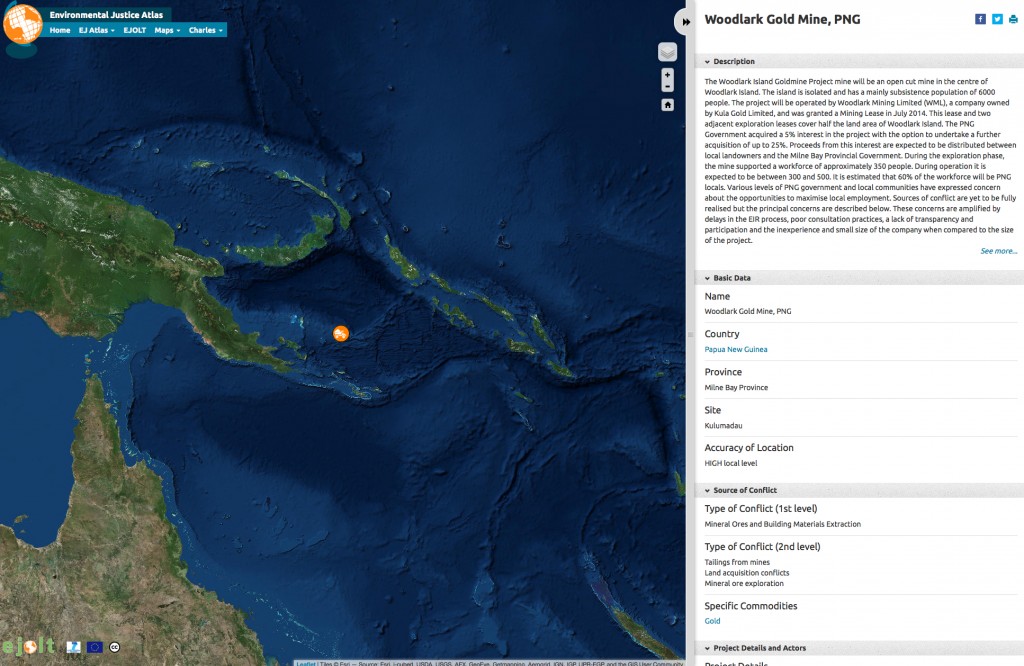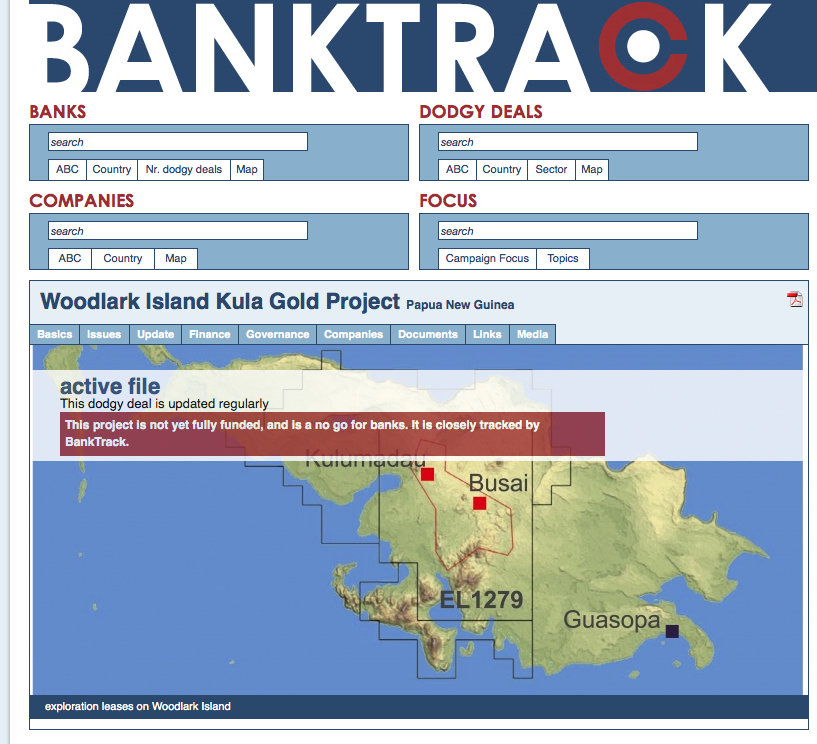Increasing transparency and accountability for Woodlark Island
In February’s Mining Monitor, MPI outlined a proposed and potentially damaging mine on Woodlark Island in Papua New Guinea, highlighting a number of potential ecological and social impacts. Part of MPI’s work is to make information about such projects available and accessible, recognising that freely available information is critical to engendering both transparency and equity in mining developments. Unfortunately, a paucity of information and a lack of transparency by Kula Gold Limited make it difficult for interested parties to access information about the project.
To highlight potential impacts and encourage more, MPI has assisted in publishing two webpages on the proposed mine at Woodlark Island, one focusing on environmental and social justice issues and the other concerned with the responsible financing of the project.
The first of these is The Environmental Justice Atlas (http://ejatlas.org) a database of teaching, networking and advocacy resources. The website is accessed through a geographical interface which directs users to global database of conflicts over resource extraction. The database includes specific details of environmental and social impacts and is an effective teaching, networking and advocacy resource which is particularly useful to strategists, activist organizers, scholars, and teachers as well as citizens wanting to learn more about the often invisible conflicts taking place around the globe. The database is a product of a project called the Environmental Justice Organisations, Liabilities and Trade which will run from 2011-2015 and is supported by the European Commission.
The EJAtlas is not only an important communication and information dissemination tool for Woodlark Island, but is also useful resource in the sense that it supports the work of Environmental Justice Organisations such as MPI. Central themes of the website are Ecological Debts (or Environmental Liabilities) and Ecologically Unequal Exchange. These are issues of fundamental importance to MPI’s work in Papua New Guinea. MPI’s work on Woodlark Island has been added to the Environmental Justice Atlas and other work will added throughout the year.
The second website (http://www.banktrack.org) is a website created by BankTrack, an NGO which focuses on the responsible financing of projects, which MPI has been a member of for many years. Kula Gold is seeking financiers to establish their controversial mine; in doing so exposing the operations and investments of private sector banks is integral to transparency. BankTrack is a particularly powerful website because it provides a cross-referencing platform for banks, deals, companies and a whole range of projects that impact negatively upon the ecological well-being of the planet and compromise the chances a decent life free of poverty and injustice for all people.
Even after the 2008 global financial crisis, private sector banks still represent a crucial source of finance for companies and governments, exerting great influence on the operations of their clients and on society as a whole. The aim of BankTrack is to make private sector banks become fully transparent and accountable for their activities to all their stakeholders and to society at large. The website is an important tool in promoting fundamental changes in the banks and in the informing them on the expectations of global civil society regarding environmentally sound and socially just business practices. The structure of the website and its capacity to show clear relationships between various companies, banks, projects and financial deals makes it a powerful resource.
By working with, or alternatively, holding these banks to account, projects such as Woodlark Island can be assessed for their impact and operations, for example against the Equator Principles.
The question is whether or not the mine can be operated responsibly. Will it contribute to sustaining healthy and just societies and ecological well-being or will it be just another mining legacy? Real concerns about the proposed mine include: resettlement of communities, the dumping of mine waste at sea, and enduring social and environmental impacts that will affect the communities long after the mine has gone. The proposed mine’s marginal financial viability multiplies the chance of interrupted or abandoned operations, increasing the risk of poor social, economic and environmental outcomes.
Both of the websites strengthen civil society’s capacity to monitor mining activity, and influence private sector banks and the capacity for NGOs, to undertake their work and provide direct support for mining affected communities.

